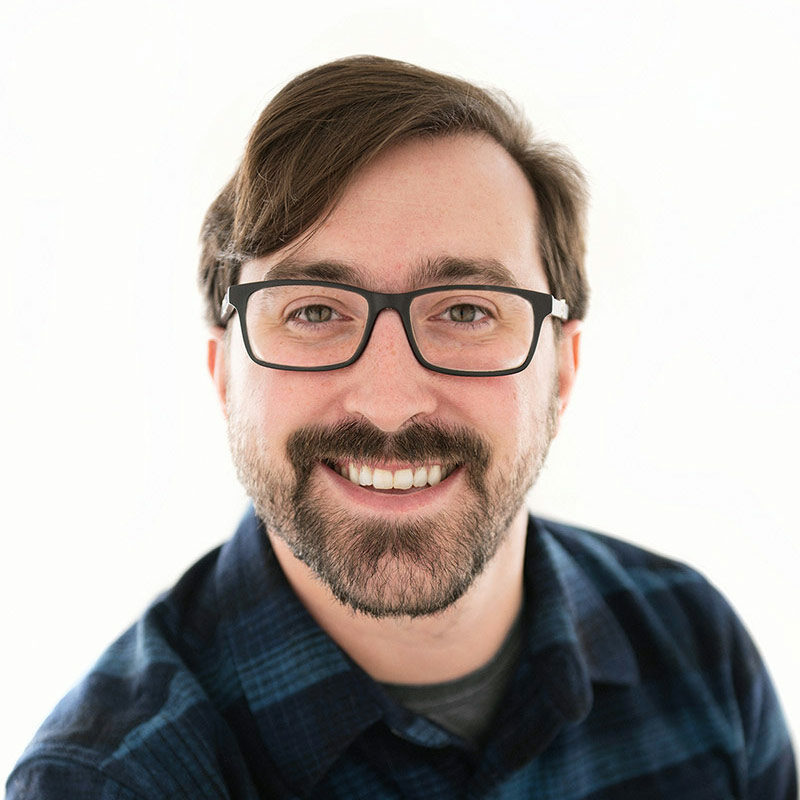Before "Winter’s Bone," Jennifer Lawrence was an aspiring actress with a couple of little-seen indie credits and a running TV gig on "The Bill Engvall Show." After "Winter’s Bone," she was an Oscar-nominated actress and one of the hottest names in the business. Katniss, the girl on fire, may have made Lawrence a star, but it was Ree, a simple protective girl from the woods of Missouri, that showed the young actress could be that star.
Of course, much of that is because Lawrence is a talented actress, but on some level, she has writer-director Debra Granik to thank.
Granik may only have two feature films ("Winter’s Bone" and "Down to the Bone") under her belt thus far, but both have made an impressive mark, helping bring stars like Lawrence and Vera Farmiga ("The Conjuring," TV’s "Bates Motel") to the public’s attention. Most importantly, however, are the stories she tells, ones with rich characters and places most of Hollywood happily looks over.
Her latest – the documentary "Stray Dog," screening at the Milwaukee Film Festival at the Oriental Theater on Saturday, Sept. 27 at 7:15 p.m. – is no different. The film focuses in on Ron "Stray Dog" Hall, a biker and Vietnam vet who continually defies easily stereotypes. Both Hall and Granik will be in attendance for the Saturday screening, with Granik also leading a filmmaking class about working with actors at the Colectivo on Prospect that afternoon.
Before the film hits the screen, OnMilwaukee.com got a chance to chat with Granik about how she found such an unique individual, why the margins fascinate her so much and what it’s like being a female filmmaker in the boys club of Hollywood.
OnMilwaukee.com: You helped launch the career of Jennifer Lawrence, and you helped launch the career of Vera Farmiga. What’s your secret?
Debra Granik: Oh gosh, no! The word is help. I maybe helped launch them because they did a great job in the films. They were great coming into it; it’s not what I did.
It’s the fact that they had rich roles. The fact is they were allowed to show what they had as actors because the role was front and center. They were leads in the film, so they were able to show various sides of themselves. Yes, I helped because I’m trying very hard to make a film in which I’m giving some space for them to have very rich roles. Their talent is then exposed, and they are noted to be interesting actors that people might want to cast in other kinds of big roles.
OMC: Your writing style has this naturalistic grit and sense of Americana about it. How did you develop that voice?
DG: I’m someone who collaborates usually, so that’s never out of my head alone. What my head says is, "Oh my gosh, I really love how that person expresses themselves" or "I love that expression," so I might then ask that person to help me write that role. In the case of my most recent film, I love the way that Ron and his neighbors talk to each other and talk about things. If you asked me tomorrow whether I want to make a narrative fiction about the goings on at the RV park – things that happen around there and heighten it – would I want Ron and his neighbors to write all the lines? Yes. It’d be Ron’s words, and that’s what I would really want.
I would write it really stilted. I would write the way I talk to my people on the East Coast, and that’s not the way Ron would talk to his people in southern Missouri. So what I’m trying to say is that I don’t think there’s a single individual that can. Americana is a big term; it’s 50 states, and within 50 states, there’s usually about 12 regions.
That’s why, when I’m at UWM talking with film students, you guys have to do this. This is your turf; you know the idiosyncrasies of the language here. You know what grandmother says up here, you know what Thanksgiving looks like up here and you know what the cheese jokes are. If I came up here, I’d have to work with you guys. Americana is this insanely rich cultural lexicon, so you have to go to the sources. It’s like any other research.
OMC: Your characters tend to usually a part of a rough, marginalized group of people. What draws you to these characters and these types of individuals?
DG: There’s many different ways to be introspective, and sometimes the way people end up understanding things about life is sort of by understanding people’s lives different from your own. Some filmmakers are really clever and adept and rigorous about turning the camera on their own subculture. Other filmmakers are maybe a little more frightened of that, and they maybe seek out and try to learn about life by seeing how other people live.
I feel like I’m in that category, where I’m interested in how do you navigate your life, how do you make ends meet, how do you not get weary of your job, how do you solve things or what are you doing to do vis a vis this member of your family who needs help – things I don’t necessarily understand firsthand, but I would like to know about. And of course, ultimately, I end up learning something about myself. I know what I can understand and what I can’t, what I can and can’t relate to.
For me, I have tremendous emotional blockage around firearms and guns in American life. Sometimes, it’s extremely important for me to have a discussion with people who are very comfortable with firearms and have an aggressive feeling about the role of firearms. It’s important for me to get a chance to speak about that to them, for me to be able to ask questions and for me to not be able to lump it all together.
A part of documentary filmmaking is humanization, to try and peel back dehumanization. This is not an original statement; this is by a filmmaker that a lot of us really love in American filmmaking history, Albert Maysles. He says about himself that his role as a documentary filmmaker is try to curb or peel back dehumanization. If you can meet one family who lives in X style, you may not be able to just lump them together as, "Oh, those people."
OMC: How did you meet Stray Dog?
DG: I met Ron in a biker’s church. I was scouting for "Winter’s Bone," and I happened to be sitting in a pew next to him. I took note of his arm, his tattoo, his leather and decided to meet him in parking lot after the service.
He was very approachable and friendly. He was very baffled about why I was sort of accosting him in the parking lot. He greeted me in a friendly style, and I felt comfortable immediately telling him we were in the area attempting to do a project and could I meet with him and tell him about the project and see if he could read the script. I was seeking local input, and he said yes.
Then he followed up. He made it really easy to reach him; he showed up when he said he would show up. Those were already important first signs that the person could be helpful to collaborate with. It was really good from the start, actually; he put out a really nice vibe that, "Yeah, I’m big and I ride a motorcycle and I have this vest on, but sure!"
OMC: Was it always going to be a documentary for you?
DG: When I decided, after talking to Ron, that it would be interesting in the wake of "Winter’s Bone" to come back and work a little bit more in that area, I was very excited about doing a documentary. I was, like, gosh, I don’t want to have to touch this too much. I want this to unfold; this is too good already. I couldn’t think of this.
You pass many RVs and trailer parks in your life, and you don’t know who lives inside. You don’t know how they decorate their place, how they survive, how they cook. So I was really grateful and happy to have it all given to me.
OMC: Sadly, you are a rarity: a female filmmaker, especially mostly on the fictional narrative side of things. Why do you think it is that documentaries have such better success with female filmmakers than the narrative side?
DG: You know, the answer to the documentary thing is really cheerful. The most immediate answer is that you don’t need a whole lot of permission to start a documentary. You don’t need any. You need the permission of the subject matter, the people you’re going to film.
If you’re shooting a documentary about an urban garden in Milwaukee that has an unusual level of mixed race teenagers working on it or something, you really don’t need too much to get that started. You need a good cameraperson, you need the consent of the people and you need bus fare to show up at the garden. That’s a really sweet spot to be in, right? It’s almost like these weird, rogue, anarchic filmmakers, where you get to decide the subjects that you think are interesting and worthy.
It’s like a back door to getting your voice heard, actually. In some ways, it’s subversive. It’s like saying, OK, maybe the front door of this big studio system isn’t exactly open, but let’s go to the back door. Let’s be invaders of the palace; let’s go through the service entry. (laughs)
OMC: Do you think Hollywood will ever be able to break out of this weird boys club mentality?
DG: Hollywood’s in this weird position with its behemoth films. It’s f*cked up. Where’s the $11 million films? They can’t do it; they have too much overhead. I don’t know so many people who want to be a part of that. I don’t know; I can’t speak for other people.
Do I want the Kathryn Bigelows of the world to hold their turf? Of course I do. But otherwise, it’s top-heavy. Maybe a lot of women find it to be oppressive. It’s just too many people eating off the fat of the top-line budget – not cool, not cool in a time when people are struggling to make a living.
I actually think a lot of women are opting out, to be honest. I think the time of being excluded is over; I think it’s now opt out.
As much as it is a gigantic cliché to say that one has always had a passion for film, Matt Mueller has always had a passion for film. Whether it was bringing in the latest movie reviews for his first grade show-and-tell or writing film reviews for the St. Norbert College Times as a high school student, Matt is way too obsessed with movies for his own good.
When he's not writing about the latest blockbuster or talking much too glowingly about "Piranha 3D," Matt can probably be found watching literally any sport (minus cricket) or working at - get this - a local movie theater. Or watching a movie. Yeah, he's probably watching a movie.







